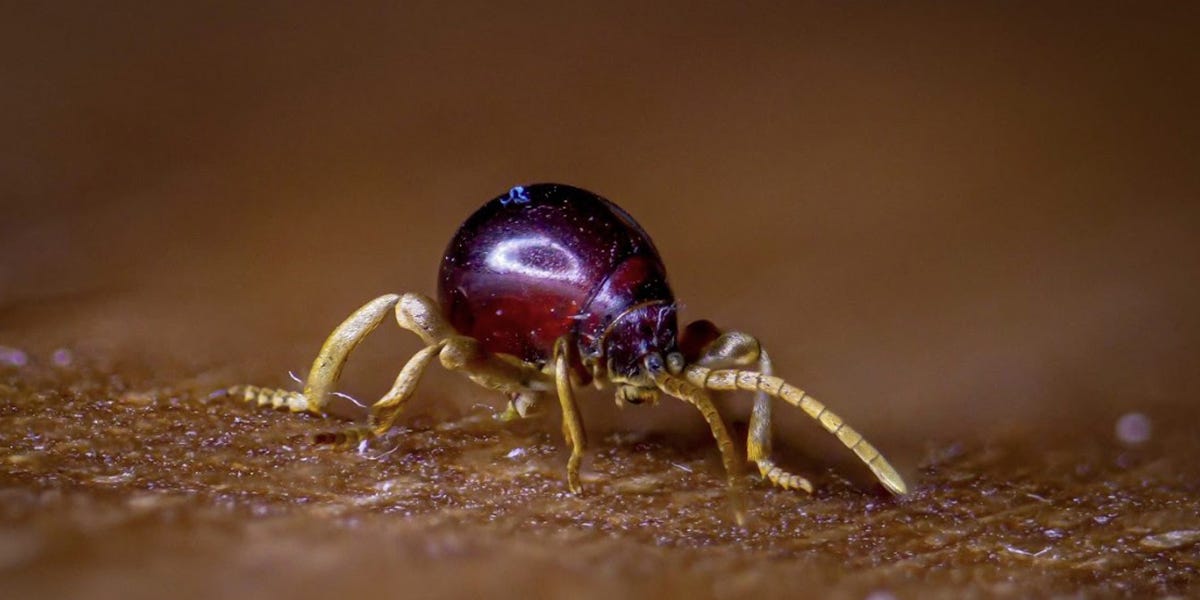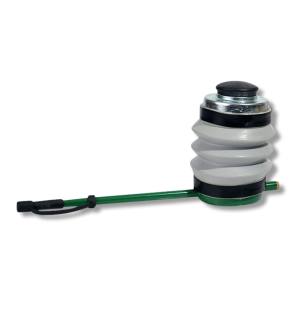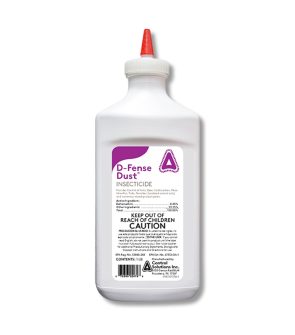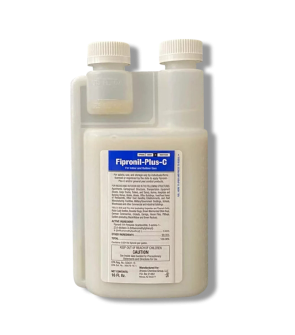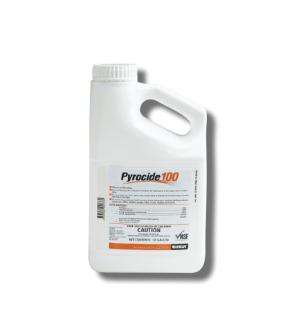Spider Beetle Control
Most Effective Products
Spider Beetle Control: How to Get Rid of Spider Beetles
This page is a general guide on removing spider beetles from your property. Using the products and methods suggested by our experienced pest control specialists you will get control of Spider Beetles. Follow this DIY guide and use the recommended products and we guarantee you 100% success in eliminating spider beetles.
There are several species of spiders in the United States, but a spider beetle is not a part of them. Spider beetles are generally 2 to 5 millimeters long and have a oval shaped abdomen with 3 long legs protruding from both sides of its body. Though there are different species of spider beetles each one will bare a similar resemblance to spiders or large mites due to their large abdomen and multiple legs.
Spider beetles are known to be a pantry pest and will be found anywhere where food is not properly secured such as within your pantry or kitchen. They are not a common pest and usually will be brought into your home through contaminated groceries or food. Their diet is based on grains so they would prefer to be in areas that contain grain products such as cereal, flour, or rice. Spider beetles are also known to infest old moldy products that contain moisture which provides an ideal environment to lay their eggs.
Spider beetles are not a dangerous species but can become numerous in a short amount of time. Homeowners are not aware of an infestation until populations become vary large since spider beetles are a relatively small species of insects and are only active at night.
If these pantry pests have become an issue in and around your home, then our DIY guide can help. Follow the advice given with our DIY spider beetle control guide to learn how you can eliminate this infestation by using the professional products and techniques given.
Identification

Before you can proceed with a treatment program, you need to be sure that the insect you are dealing with is actually a spider beetle. Careless identification can lead to using the wrong treatment products and can be a waste of your time and money. Below are some traits and facts about beetles to aid you with identification:
- The spider beetle can be misidentified as a spider or large mite due to its unique appearance.
- Ranging between 2 to 5 millimeters in length, spider beetles will have an rounded oval shaped body with multiple legs on each side of its body and a distinctive solid color ranging from a darkish reddish-brown or black to pale yellow or cream color.
- Spider beetles will vary in shape and color, but will share the same characteristics such as shell-like wings, chewing mouthparts, and a pair of antennae.
- From a topside view, the spider beetles round shaped body will be the first thing you see due its wing covers giving them a humped shaped appearance. Its head is orientated downwards so that is not easily seen from above.
- A male or female spider beetle can fly whereas with the whitemarked spider beetle species, only the males can fly.
Use the description and image above to help you to properly identify spider beetles on your property. If you are not entirely sure, contact us and we will help you with correct identification.
Inspection

After you have confirmed that you are dealing with spider beetles, you can proceed with an inspection to identify not only where the spider beetles are active, but also what is drawing them to the area.
Where to Inspect
Indoors you are looking in storage areas close to the kitchen or in the kitchen itself. In the kitchen, look inside cabinets, shelves, pantries, drawers, and under the sink (where the plumbing penetrates the walls) or fridge as spider beetles prefer dark and moist areas. Since spider beetles are a nocturnal species they can also be found within walls, attics, cracks and crevices of your home.
Typically, you will find spider beetles within your home, but it is not uncommon to find them outside since they are capable of withstanding temperatures below 50º F. Search your shed or storage area where you store grain products such as bird seeds, pet food, or small seeds for planting or feed, and also damp, dark locations like underneath your porch. Spider beetles are also known to infest a bird or rodent nest and areas containing bird feathers or rodent droppings.
What to Look For
You will look for sings of spider beetle activity such as holes in packaging or food containers, webbing in food, silk cocoons, and sometimes left over shed body parts or waist in food.
Treatment
Once you have confirmed spider beetle activity, it is time to begin treatment. Remember to read all product labels and follow the application instructions on these labels, and stay safe by wearing personal protective equipment (PPE).
To get rid of spider beetles, start with proper sanitation of your home to eliminate food and water sources that the spider beetles may have access to.
Step 1: Sanitize Your Home

Spider beetles are in your home in the first place because they want food, water and shelter. Take away these comforts and they may leave on their own.
Clean your home, in particular, your kitchen. Make sure to wipe and sweep away crumbs, grease and take out the trash. Store all food whether opened or new into plastic containers. Remove any damaged or infested food products from your home.
Remove sources of water by keeping areas such as your kitchen sink totally dry, and fixing any plumbing leaks so that there is no moisture around for spider beetles to enjoy.
Step 2: Spray Supreme IT Around and Inside Your Home

Supreme IT is a broad-spectrum insecticide that is labeled for treating spider beetles. It also has a long residual effect that continues to kill for up to 90 days after application.
To apply Supreme IT, simply mix water in a hand pump or hose-end sprayer then add Supreme IT at a rate of 1 fl. oz. per gallon to cover 1,000 sq. ft. To accomplish uniform control when applying to dense grass foliage, use volumes of up to 10 gallons per 1,000 sq. ft. Measure the square footage of your lawn to determine how much Supreme IT you need to cover the entire area. Shake well and pump your sprayer.
For treatments inside your home apply as a spot treatment and follow the label directions. Remove all food, containers, and objects from treatment area and do not replace until spray mixture has dried or 48 hours have passed.
As a last step, spray a perimeter treatment of Supreme around the outside of your home to create a barrier to keep spider beetles out if present within your yard. Spray around doors and windows, around the foundation going up 2 or 3 feet then spray any other possible points of entry.
Step 3: Apply D-Fense Dust to Crevices and Voids

D-Fense Dust is a waterproof insecticidal dust that comes in powder form. It is a synthetic pyrethroid and affects the nervous system of spider beetles. D-Fense Dust is great to apply in hard to reach voids and crevices where spider beetles will often hide.
By using a duster, the dust can be puffed into wall voids, behind electrical outlets and under appliances like the stove and refrigerator. It has a long-time residual, remaining effective long after application as long as the product does not get wet.
Use D-Fense with a pesticide duster for more precision in your application. Fill the duster with 0.5 lb. of dust to cover 1,000 sq. ft and then apply it in crevices, behind appliances or electrical outlets by opening up the faceplates and other areas where spider beetles may be hiding.
Prevention

Once you have successfully removed the spider beetle infestation, you will need to carry out preventative measures to ensure they do not make a return to your pantry or home. Here are some measures to take to ensure spider beetles do not reinfest again.
- Regularly check food packages before you buy them. While you are inspecting the packages look for possible tears, holes, or punctures. Many times this is how spider beetles enter your home. Also, get into the habit of storing food products into tight fitting plastic containers. By doing this you can prevent future infestations, and isolate a possible infestation if your package is already contaminated.
- Regularly vacuum, mop, and clean dishes. Take out the garbage daily, and do not leave pet food and water bowls out in the open or overnight. Do your best to eliminate water sources around your property.
- Inspect your kitchen pantries regularly for pantry pests and remove all old or unused dried foods. Any opened food packaging store into air-tight plastic containers or jars.
- Wipe and dry any moisture buildup around plumbing within your kitchen such as where faucet meets the wall or around your sink.
- Inspect the outside of your home for cracks, voids, wall gaps, or holes and have them filled with caulk. This will help prevent spider beetles who are infesting a bird or rat nests, feathers, or droppings from entering your home.
- Apply Supreme IT every 3 months around the perimeter of your home to keep spider beetles away. This maintenance treatment will help prevent future infestations.
Key Takeaways
What are Spider Beetles?
- Spider beetles are an uncommon pantry pests that will quickly contaminate grain based food products in your pantry and create a large infestation with their egg-laying.
- Spider beetles are known for their distinctive oval shaped abdomen, multiple long legs, and tucked away head. They are often mistaken to be spiders due to their appearance.
How to Get Rid of Spider Beetles From Your Home
- To get rid of a spider beetle infestation we recommended sanitizing your home and removing the source of infestation.
- Spray Supreme IT inside and outside of your home. Apply on the outside perimeter of your home to eliminate any possible outside infestations.
- Apply D-Fense Dust to treat appliances, voids and crevices where spider beetles like to hide.
Preventing Spider Beetle Reinfestation
- Prevent future spider beetle Infestations by maintaining cleanliness around the home, sealing up points of entry, routinely checking pantries for damaged or old food, inspecting food products for any tears before purchase, and occasionally applying Supreme IT on the outside perimeter of your home.
